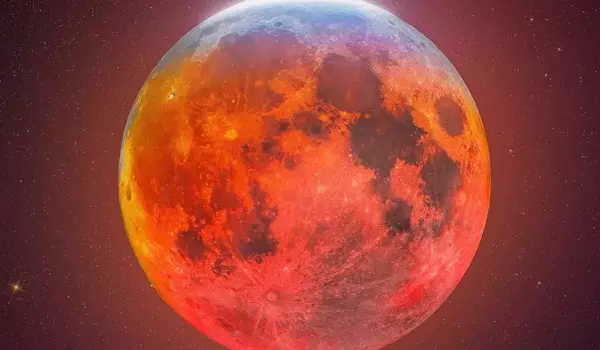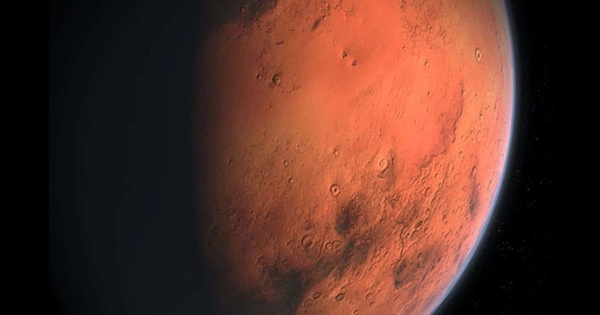Despite decades of exploration and study, Mars continues to be riddled with mysteries. Scientists are still trying to figure out what happened to the water that once flowed on Mars’ surface. Unfortunately, billions of years ago, the Martian atmosphere began to be stripped away by the solar wind, resulting in the loss of its surface water over time – though where it went and what mechanisms were involved were not entirely clear.
According to new research, the Red Planet’s dust storms could be caused by a seasonal imbalance in the solar energy absorbed and released by the planet. Understanding how the system on Mars works could aid scientists in predicting how climate change will affect Earth.
A seasonal imbalance in the amount of solar energy absorbed and released by Mars is a likely cause of the dust storms that have long intrigued observers, according to a team of researchers.
The extreme imbalance in Mars’ energy budget (a term referring to the measurement of solar energy a planet takes in from the sun and then releases as heat) was documented by University of Houston researchers Liming Li, associate professor of physics; Xun Jiang, professor of atmospheric science; and Ellen Creecy, doctoral student and lead author of an article to be published this week in the Proceedings of the National Academy of Sciences (PNAS).
One of our most interesting findings is that the energy excess more energy being absorbed than emitted could be one of the generating mechanisms of Mars’ dust storms. Understanding how this works on Mars might provide clues about the roles Earth’s energy budget takes in the development of severe storms, including hurricanes, on our own planet.
Ellen Creecy
“One of our most interesting findings is that the energy excess — more energy being absorbed than emitted – could be one of the generating mechanisms of Mars’ dust storms. Understanding how this works on Mars might provide clues about the roles Earth’s energy budget takes in the development of severe storms, including hurricanes, on our own planet,” Creecy said.
Mars’ thin atmosphere and elliptical orbit make it especially vulnerable to large temperature differences. It absorbs massive amounts of solar heat during its perihelion seasons (spring and summer for Mars’ southern hemisphere), which is also the time of year when its dust storms appear. Mars absorbs less solar energy as its orbit moves it further away from the sun. This phenomenon occurs on Earth as well, but the researchers discovered it to be especially extreme on Mars.
Energy imbalances on Earth can be measured by season and year, and they play an important role in global warming and climate change. Creecy and her colleagues are investigating whether energy imbalance exists on Mars on longer time scales, and if so, what the implications would be for the planet’s climate change.
“Mars is not a planet that has any kind of real energy storage mechanisms, like we have on Earth. Our large oceans, for example, help to equilibrate the climate system,” Creecy said. Yet, Mars bears signs that oceans, lakes and rivers were once abundant. So what happened? The facts are unsettled as to why or when the planet dried into a hot, dusty globe with an abundance of iron oxide – rust, actually, whose tawny color inspired observers from centuries ago to call it the Red Planet.

Scientists have long suspected that dust storms were responsible for the majority of Mars’ water loss, but they underestimated the significance of regional storms. These occur nearly every summer in the planet’s southern hemisphere, whereas larger storms (which can cover the entire planet) typically occur once every three to four Martian years – the equivalent of about five and a half to seven and a half Earth years.
“Mars once had oceans and lakes, but it later experienced global warming and climate change. Mars’ oceans and lakes vanished for unknown reasons. We know that climate change is occurring on Earth right now. So, what are the lessons of Mars’ experience for the future of Earth? “Li enquired.
Creecy and her colleagues arrived at their conclusions by comparing four years of data from Mars’ orbits and temperatures (Martian years, roughly equivalent to eight Earth years) to conditions documented by NASA missions.
For planetary enthusiasts, much of the data is available for free on NASA’s Planetary Data Systems website, though some information is only available to researchers. They also worked with NASA scientists, including several who were key members of previous missions, such as the Mars Global Surveyor and two rovers, Curiosity and Insight, which are still operating on the surface of Mars.
“When we look out into the distance, Earth is just one of many planets. We can never see the whole picture with just one point. To get a complete picture of the evolution of our own Earth, we must look at all points, all planets. There are numerous things we can learn from other planets “Li said. “We learn a lot about Mars’ history by studying it. What exactly is climate change? What is our planet’s future phase? What is the Earth’s evolution? There is so much we can learn from other planets.”
















